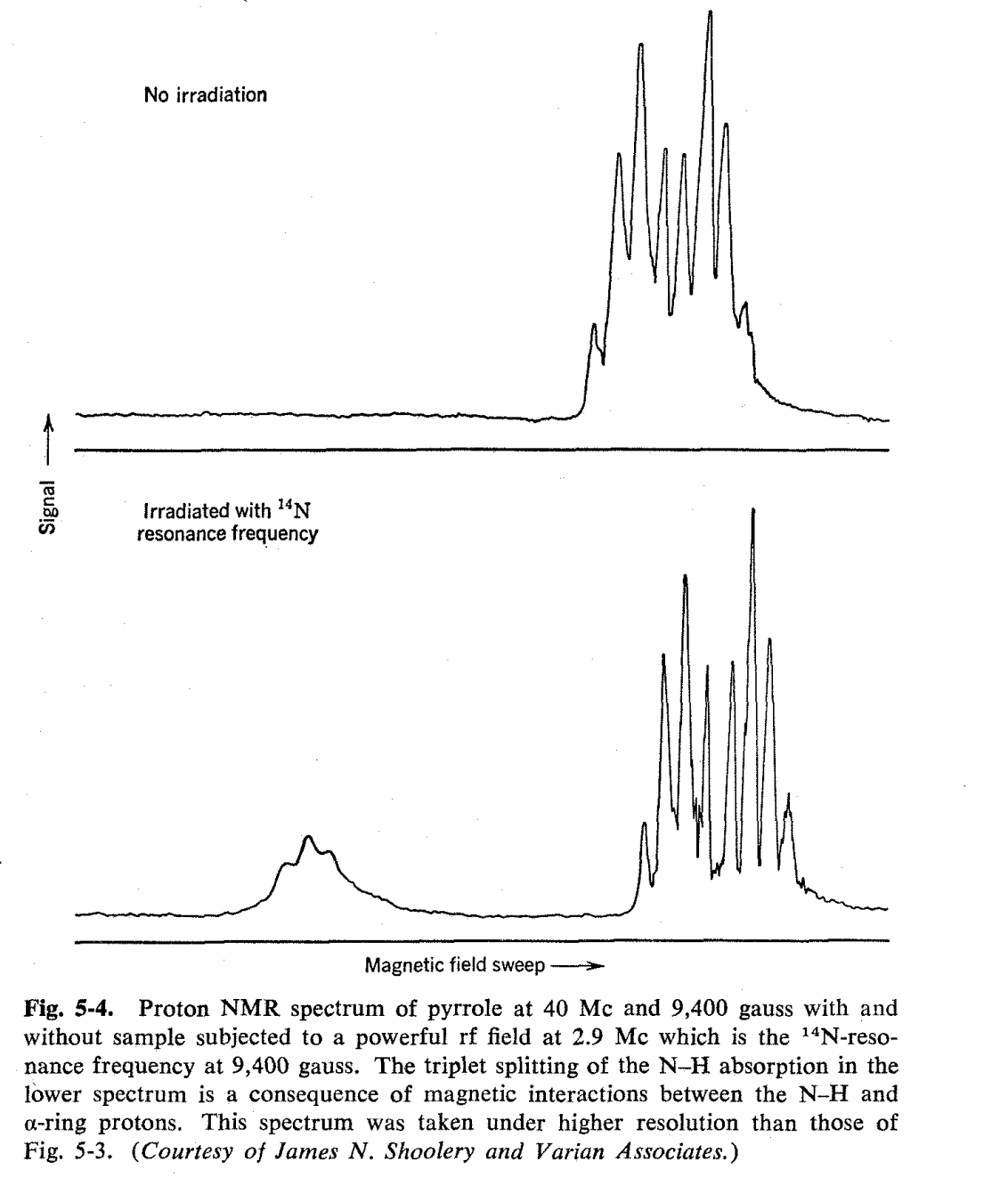5.4: Quadrupole-induced Relaxation with Other Nuclei
- Page ID
- 366666
All nuclei which have a spin of greater than $$ act like electric quadrupoles and undergo more or less efficient relaxation through interactions with surrounding dissymmetric electric fields produced by their valence electrons. Most of the halogen nuclei (chlorine, bromine, and iodine, but not fluorine) are relaxed very rapidly by the quadrupole electric field interactions. As a result, even though these nuclei have considerable magnetic moments, they do not normally cause spin-spin splitting as might be expected for proton-halogen coupling in compounds like methyl chloride, bromide, or iodide, because rapid relaxation averages the magnetic effects of the halogens to zero. 14N is notorious for its tendency to relax at intermediate rates when unsymmetrically substituted and this causes broadening of N-H proton resonance signals. However, with a number of amino compounds, such as ethylamine, sharp proton resonances are observed for the N-H protons. This is surely a consequence of rapid intermolecular exchange between the N-H protons rather than rapid quadrupole-electric field relaxation.



